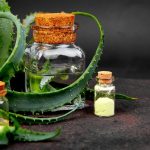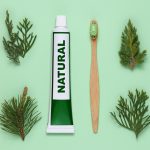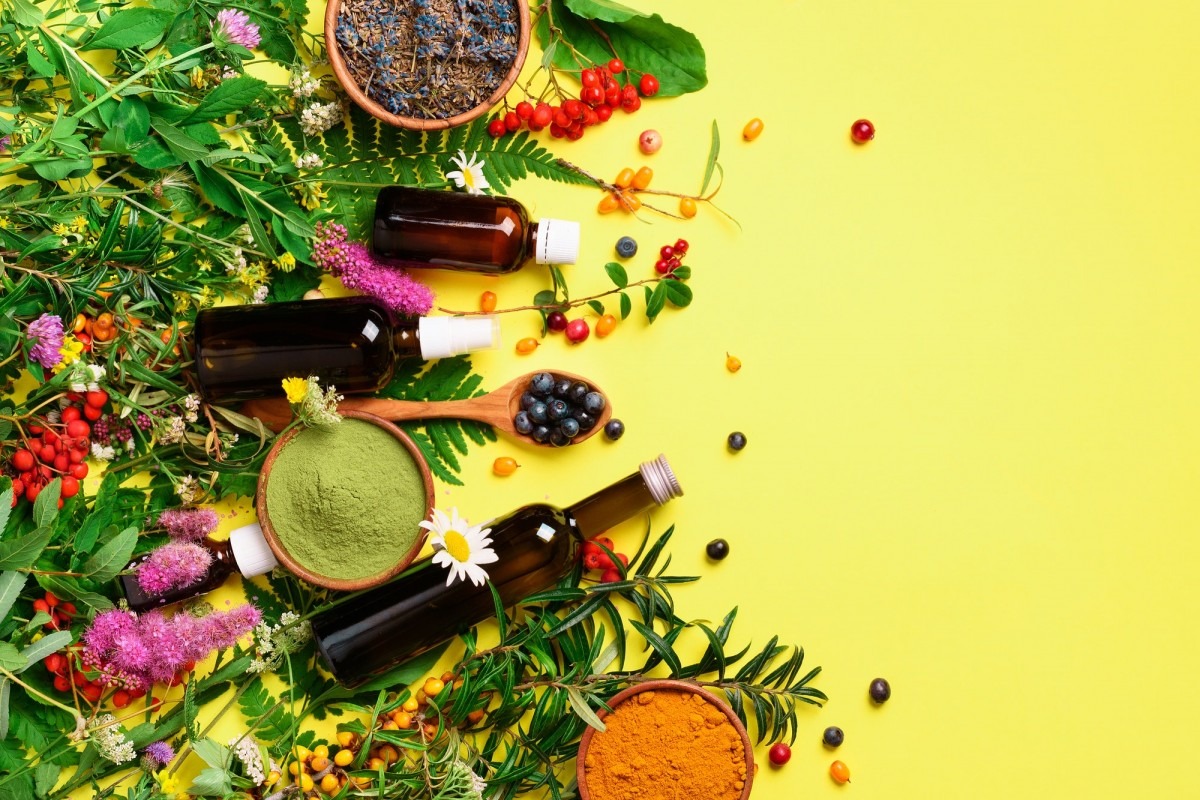The best natural ingredients to give you an immediate glow, without harmful toxic chemicals. I show you the unique benefits each ingredient gives your skin, and exactly how easy it is to use these healthy ingredients.
I used to think that there aren’t enough natural ingredients for glowing skin that you can find in the market.
With the help of internet research, I discovered what I’ve been missing out on.
It turns out that nature has actually gifted us with botanicals, plant extracts, naturally-occurring compounds, and minerals that all contribute to a radiant-looking skin.
And the good news? They’re also affordable and safe from harmful, toxic contamination.
In this blog post, I’ll share 30 natural ingredients that you can use alone or in combination with other organic remedies so you achieve a healthy glow.
30 Best Natural Ingredients For Glowing Skin That Really Work
Ditch the toxic chemicals.
It’s time to revamp your beauty arsenal with all-natural ingredients that don’t sting, burn, or worse, bring health complications.
Some of the items in this list might need to be sourced out from trusted sellers.
Still, a lot of them can be easily found at the local drugstore.
You may even check your pantry for some instant home remedies!
So here are 30 ingredients for glowing skin and how you can use them to get that coveted skin that glows.
1) Vitamin C
Benefits Of Vitamin C
Vitamin C is perhaps the most common and natural antioxidant for the skin.
It helps in collagen production, reduction of melanin pigmentation, and protection from oxidative stress.
It slows down photo-aging by depositing antioxidants into the skin.
How To Use Vitamin C
If it comes in a topical form or a serum, you can apply 3 drops onto your skin and massage it all over your face until absorbed.
Apply a liberal amount, about 3 drops per body arm and leg, like you would a lotion.
Do this daily until you achieve your desired results.
If you want to see a brightening effect much sooner, you may combine a teaspoon of pure Vitamin C with a teaspoon of hyaluronic acid.
Use this to make a skin care recipe for your morning and nighttime routine, right after cleansing and toning.
2) Hyaluronic Acid
Benefits Of Hyaluronic Acid
It helps deposit moisture to skin to make it plumper, radiant, and younger-looking.
Also, it aids in improving skin texture and complexion.
How To Use Hyaluronic Acid
Combine a teaspoon of hyaluronic acid with equal parts Vitamin C for a recipe that you can place in a mini vial or dropper bottle.
Apply directly on face, massaging it gently until absorbed.
You may apply some on your skin as if with a lotion.
Daily application speeds up the brightening effect on your skin.
3) Argan Oil
Benefits Of Argan Oil
With its medium consistency, argan oil is an ideal skin moisturizer for all skin types.
It contains Omega fatty acids, vitamin E, and linoleic acids.
All of these help in hydrating dry patches and clearing face of acne.
How To Use Argan Oil
Apply up to two drops for the face and massage until absorbed.
Use it after cleansing and toning, or as a moisturizer.
It’s best applied at night before sleep so your skin can soak up its goodness.
If you want to try a bi-weekly face-brightening mask, combine five drops of argan oil with one tablespoon of honey and two tablespoons of fresh lemon juice.
Mix the ingredients and apply on the face. Leave it on for 10 minutes after massaging and rinse with cold water.
4) Turmeric
Benefits Of Turmeric
It contains a powerful compound called curcumin that slows down melanin production which causes skin darkening.
Similarly, it has antioxidants and anti-inflammatory properties that cure skin conditions such as psoriasis, acne, dark spots, and photoaging.
How To Use Turmeric
For a skin brightening mask, combine one tablespoon of turmeric powder with two tablespoons of lemon juice.
This will create a paste that you’ll put on your face like a mask.
Leave it on for about 20 minutes before rinsing.
You can do this twice a week to speed up the skin lightening process.
5) Sunflower Seed Oil
Benefits Of Sunflower Seed Oil
It contains Vitamin E and emollient properties that help skin retain moisture.
In addition to these nutrients, sunflower seed oil also has beta-carotene and Omega-6 acid.
Both help reduce skin inflammation and support the growth of new skin cells.
How To Use Sunflower Seed Oil
Apply up to two drops of the oil to be applied on the face. You should massage it gently until fully absorbed.
The same can be done for body application. Use up to three drops per body part like you would a lotion.
6) Aloe Vera Gel
Benefits Of Aloe Vera Gel
The gel part of the aloe vera leaf contains antioxidants, enzymes, and Vitamins A and C.
These nutrients are essential in clearing the skin of acne and soothing sunburns.
How To Use Aloe Vera Gel
Scoop the gel portion of an aloe vera leaf and apply directly onto face. Massage gently all over the face before rinsing.
You can also try the aloe vera mask. Mix 1 tablespoon of the gel, 2 tablespoons of honey, and a ¼ teaspoon of cinnamon to form a paste and apply onto face.
Let sit for10 minutes before rinsing.
Do it once a week for a bright and clear complexion.
7) Kelp Powder
Benefits Of Kelp Powder
Sea kelp has been discovered to possess anti-inflammatory qualities and antioxidants that help soothe sunburns and acne.
Also, thanks to its high mineral content, it can even be used as a moisturizer.
How To Use Kelp Powder
Make a face mask using one tablespoon of kelp powder, one teaspoon of vegetable glycerine, and two tablespoons of water.
Combine the ingredients to form a paste and apply onto face.
Leave it on for 10 minutes and wash with warm water.
Do it once a week to achieve radiant skin.
8) Rose Water
Benefits Of Rose Water
Rose water contains antioxidants that shield your skin from damage by free radicals.
It is also used for the treatment of skin conditions such as eczema and rosacea due to its anti-inflammatory properties.
How To Use Rose Water
To use it as a toner, soak a cotton ball with a few drops of rose water.
Make sure you have done cleansing before swiping it all over your face.
Use it as part of your daily skincare routine.
9) Sandalwood Essential Oil
Benefits Of Sandalwood Essential Oil
Since it is antibacterial oil, sandalwood helps bust out acne-causing bacteria.
It is also a mild exfoliant and a lightening agent that reduces the appearance of suntan and dark spots.
How To Use Sandalwood Essential Oil
The best time to use sandalwood essential oil is in the evening before sleep.
Apply it on your face as a serum, which you can make by combining a few drops of sandalwood oil and two tablespoons of carrier oil (argan, coconut, jojoba, grapeseed, etc.)
10) Retinol
Benefits Of Retinol
Contrary to popular belief, retinol is not just for anti-aging.
It also encourages cell renewal, which means your skin will be replaced with a healthier layer.
This, in turn, can reduce the appearance of dark spots.
How To Use Retinol
Apply up to two drops of retinol on your face, but make sure you only do it at night.
Since it works quickly to turn over cells, you might experience breaking out or swelling. That’s when you will use a sunscreen during the day.
11) Cucumber
Benefits of Cucumber
The good old cucumber can address other skin concerns aside from puffy eyes.
Cucumber is also a natural astringent and bleaching agent that helps remove impurities and lighten dark spots, respectively.
How To Use Cucumber
Mix one cup of cucumber juice with a half cup of lemon juice.
Apply the mixture on your face and leave it on for 15 minutes.
Rinse with cold water.
12) Bakuchiol
Benefits Of Bakuchiol
Bakuchiol has a retinoid-like mechanism that fights hyperpigmentation, skin discoloration, acne-causing bacteria, and viral skin irritants.
How To Use Bakuchiol
Use it as you would a toner by soaking a cotton ball with few drops of bakuchiol.
Unlike retinol, you can use bakuchiol even in daytime because it is safe under the sun.
You don’t need to apply moisturizer afterward, but that depends on your preferences.
13) Lemon Essential Oil
Benefits Of Lemon Essential Oil
Lemon is a natural astringent, bleaching agent, and antibacterial ingredient that aids in achieving healthy, glowing skin.
How To Use Lemon Essential Oil
Dilute two drops of lemon essential oil with five tablespoons of carrier oil like jojoba and coconut oil.
Apply the mixture on your face and leave it on for 15 minutes.
Wash with cold water afterward.
Do this daily as part of your skincare routine, but make sure not to leave it on when going outside in the sun.
14) Avocado
Benefits Of Avocado
Avocado contains a chock-full of fatty acids that serve as ideal skin moisturizers.
Its Vitamin E content, as well as lecithin and potassium, helps protect the skin from photodamage.
Additionally, its oleic acid and chlorophyll help reduce the swelling and inflammation of acne-prone skin.
How To Use Avocado
If you’re using an actual fruit, mix a half cup of avocado with a half cup of Greek yogurt and 3 teaspoons of organic honey.
The resulting mixture can then be applied as a hydrating mask.
Leave it on for 15-20 minutes before rinsing with cold water.
Do this for once a week to rejuvenate your skin.
On the other hand, if you’re planning to use avocado oil instead, you may apply it safely by itself on your face and body like a lotion.
15) Olive Oil
Benefits Of Olive Oil
Olive oil is rich in Vitamins A and E, which are essential in skin health.
Aside from its moisturizing effect, olive oil is also a potent antioxidant that helps eliminate oxidative stress and free radicals.
How To Use Olive Oil
To make a clarifying facial scrub, mix one teaspoon of olive oil with two teaspoons of baking soda.
The resulting paste should then be applied on your face and massage gently to exfoliate.
With a warm washcloth, wipe away the remaining traces of the scrub and rinse off with cold water.
It’s okay to do this bi-weekly to get rid of impurities while feeling moisturized at the same time.
16) Banana
Benefits Of Banana
Banana is one of the few fruit varieties that contain loads of Vitamin A, which is a skin nutrient that restores moisture and repair dry patches.
Moreover, it contains anti-inflammatory properties that help reduce the appearance of reddish acne and scars.
How To Use Banana
With a medium-sized banana, you can make a moisturizing mask by mashing it into a paste.
Apply it on your face avoiding eyes, and leave it on for 20-25 minutes.
Wash it off with lukewarm water afterward. You can do it every day as necessary since it’s gentle on delicate skin.
Also, don’t throw that peel away! You can use it to minimize the appearance of acne.
Simply rub the insides of a banana peel on your acne for a few minutes. Rinse with cool water.
17) Brown Sugar
Benefits Of Brown Sugar
Brown sugar is a humectant that is high in natural molasses. Meaning, it deposits moisture into your skin effectively along with other skin nutrients.
With its rounder granules, brown sugar makes for a gentle abrasive that can be used for exfoliating dead skin cells.
How To Use Brown Sugar
For a scrub that addresses your acne concern, mix a half cup of brown sugar with equal parts of coconut oil.
Apply the mixture onto your face and gently massage in circular motions.
Wash with cool water.
Do this once a week to achieve clear skin.
18) Coconut Oil
Benefits Of Coconut Oil
Coconut oil has medium-chain fatty acids that serve as antimicrobial agents for ridding the skin of acne and impurities.
Similarly, it minimizes the swelling of acne to give you a clear complexion.
How To Use Coconut Oil
For a clarifying cleanser that also removes makeup, apply a few drops on your face and massage all over.
With a warm muslin cloth or washcloth, wipe away the oil along with residues.
Rinse with cool water.
You can do this every night before going to bed.
19) Multani Mitti (Fuller’s Earth Clay)
Benefits Of Multani Mitti (Fuller’s Earth Clay)
Rich in minerals and oil-absorbing nutrients, Multani mitti or fuller’s earth is commonly used against oily and acne-prone skin.
It removes impurities and helps in the development of healthy skin cells.
How To Use Multani Mitti (Fuller’s Earth Clay)
You can make a clarifying scrub by mixing a half cup of Multani mitti and a half cup of oatmeal powder.
Sprinkle the mixture with one teaspoon each of turmeric and sandalwood powders. Add in two tablespoons of non-dairy milk.
Apply the paste onto your face and rub in circular motions. Rinse with water.
Do this at least once a week to achieve acne-free complexion.
20) Bentonite Clay
Benefits Of Bentonite Clay
Bentonite clay contains negatively-charged ions that attract and draw toxins out of your skin.
It is best known as an acne remedy because of its ability to reduce swelling and appearance of scars.
How To Use Bentonite Clay
Make a clay mask by mixing a half cup of bentonite powder with a half cup of water.
The resulting paste should be thick, which you will put all over your face.
Leave the mask on for about 20 minutes before rinsing off with water.
You can do this twice a week until your acne clears up.
21) Activated Charcoal
Benefits Of Activated Charcoal
Activated charcoal acts like a magnet that draws impurities and toxins out of your skin.
It also rids your face of excess oil, which makes it ideal for oily and acne-prone skin types.
How To Use Activated Charcoal
Make a mattifying mask by combining a half tablespoon of activated charcoal and a half tablespoon of Multani mitti.
Apply the smooth paste all over your face and let dry.
But don’t let it dry too much because it would be difficult to remove the mask.
Rinse with warm water.
Do this once a week to get rid of greasy skin.
22) Diatomaceous Earth
Benefits Of Diatomaceous Earth
Diatomaceous earth helps in restoring the lost minerals in your skin that make it healthy and glowing.
It has a natural abrasive quality, which makes it ideal for exfoliating dead skin cells.
How To Use Diatomaceous Earth
Mix one tablespoon of diatomaceous earth with equal parts of water.
The resulting paste should be applied and massaged onto your skin.
Rinse with water.
As with most scrubs, you should only do this once a week.
23) Jojoba Oil
Benefits Of Jojoba Oil
Jojoba oil is known for its high fatty acids content that ensures moisturization for dry skin.
It is also hypoallergenic and anti-inflammatory, which makes it perfect even for sensitive skin.
Additionally, it contains antioxidants that help maintain healthy skin cells.
How To Use Jojoba Oil
To make a DIY moisturizer that helps heal eczema and other skin conditions, mix three tablespoons of aloe vera gel with one tablespoon of jojoba oil.
Apply the mixture onto your face like you would a moisturizer.
Use this after cleansing and toning to speed up healing of the skin.
24) Shea Butter
Benefits Of Shea Butter
Popularly used as a body conditioner and soap base, shea butter is an all-around remedy for problematic skin.
It can be used as a moisturizer, acne treatment, scar remover, and anti-aging cream.
Its high Vitamins A and E content, as well as high SPF rating, make shea butter an essential skincare ingredient.
How To Use Shea Butter
To make an antibacterial acne treatment, melt a cup of shea butter and mix it with three tablespoons of rose water.
Add three tablespoons of aloe vera gel and five drops of tea tree oil.
Put the mixture into a wide-mouthed jar and take a scoop every night to apply on your face.
25) Papaya
Benefits Of Papaya
The papain in ripe papaya is a popular ingredient in most skin lightening products.
Hence, the papaya fruit itself is an ideal bleaching agent in place of chemical ones.
How To Use Papaya
Make a mask out of papaya by mashing its flesh and combining it with two tablespoons of honey and two tablespoons of lemon juice.
Apply the mixture onto your face and leave it on for 15 minutes.
Once dry, rinse it off with cold water.
Do this up to three times a week to speed up skin lightening.
26) Cocoa Butter
Benefits Of Cocoa Butter
Cocoa butter contains high fatty acids that help retain skin’s elasticity.
Since plump and hydrated skin is equivalent to glowing skin, regular use of cocoa butter can keep up with your aging process.
How To Use Cocoa Butter
Make luscious body butter by combining half cups each of melted cocoa butter, shea butter, and coconut oil.
Let it cool until you can whip it up into cream using a hand mixer.
Apply on your body after showering to achieve a youthful glow.
27) Castor Oil
Benefits Of Castor Oil
Castor oil earned its reputation for being an acne remedy.
It is antibacterial and anti-inflammatory, which makes it perfect for busting out acne and the bacteria that causes it.
Similarly, its high fatty acids content helps deposit moisture into the skin.
How To Use Castor Oil
Apply up to two drops of castor oil on your face and massage gently.
You can leave it on overnight and rinse in the morning.
Do this until your face clears up of acne and scarring.
28) Green Tea
Benefits Of Green Tea
Green tea has antioxidants, anti-inflammatory, and anti-carcinogenic properties, which makes it ideal for dark spots and other skin ailments.
How To Use Green Tea
For clear skin, make a toner by steeping a bag of green tea in hot water for 10 minutes.
Use the infused liquid by dipping a cotton ball in it and applying it all over your face.
Rinse with water.
Do this every night before sleeping.
29) Oatmeal
Benefits Of Oatmeal
Oatmeal is not just a breakfast staple, but a remedy for psoriasis and other skin conditions.
It has anti-inflammatory and antioxidant properties that help improve the skin’s protection from damage and irritation.
How To Use Oatmeal
Grind five tablespoons of oatmeal and mix it with the same amount of water.
Apply the mixture onto your face evenly, carefully as it may crumble apart.
Wait for 20 minutes before rinsing.
Use regularly as needed.
30) Carrot Seed Oil
Benefits Of Carrot Seed Oil
The carrot seed oil contains antioxidants that target free radicals and retain skin’s health.
It is also antimicrobial, which makes it ideal as an acne remedy.
As if that’s not enough, carrot seed oil also possesses an SPF rating of 40.
How To Use Carrot Seed Oil
Dilute 3-4 drops of carrot seed oil with one teaspoon of carrier oil to make a facial moisturizer.
Apply on the face in the evening and rinse off in the morning.
Conclusion
Even with a little budget, you can still achieve a youthful glow using natural ingredients
While they may not sound as fancy as the manufactured beauty products, they’re highly effective, safe, and easy to use.
Here are the 30 Best Natural Ingredients for Glowing Skin That Really Work:
- Vitamin C
- Hyaluronic Acid
- Argan Oil
- Turmeric
- Sunflower Seed Oil
- Aloe Vera Gel
- Kelp Powder
- Rose Water
- Sandalwood Essential Oil
- Retinol
- Cucumber
- Bakuchiol
- Lemon Essential Oil
- Avocado
- Olive Oil
- Banana
- Brown Sugar
- Coconut Oil
- Multanimitti (Fuller’s Earth Clay)
- Bentonite Clay
- Activated Charcoal
- Diatomaceous Earth
- Jojoba Oil
- Shea Butter
- Papaya
- Cocoa Butter
- Castor Oil
- Green Tea
- Oatmeal
- Carrot Seed Oil
I hope that this list will inspire you to reconsider your skin care options and go with products that don’t harm your health yet still work wonders.
All you have to do is choose natural ingredients for glowing skin that have no toxic chemicals and backed by clinical studies.
FREE Anti Cellulite Smoothing Whipped Body Butter Recipe Card
The perfect DIY body butter for getting rid of your cellulite!
Click here to get your Anti-Cellulite Smoothing Whipped Body Butter Recipe Card
More Related Posts You Will Love
- 25 Toxic Skincare Ingredients To Avoid In Your Own Cosmetics
- 20 Best Natural Skin Care Products For Sensitive Skin
- 30 Best Natural Ingredients For Glowing Skin That Really Work
- Home Spa Ultimate Guide (Ideas, Recipes, Benefits, Treatments)
Sources
- https://www.ncbi.nlm.nih.gov/pmc/articles/PMC5579659/
- https://www.ncbi.nlm.nih.gov/pmc/articles/PMC5605218/
- https://www.ncbi.nlm.nih.gov/pubmed/30287361
- https://www.ncbi.nlm.nih.gov/pubmed/29280987
- https://www.ncbi.nlm.nih.gov/pmc/articles/PMC5796020/
- https://www.ncbi.nlm.nih.gov/pubmed/27213821
- https://www.ncbi.nlm.nih.gov/pubmed/22995032
- https://www.ncbi.nlm.nih.gov/pmc/articles/PMC2763764/
- https://www.researchgate.net/publication/237096622_Effects_of_seaweed_Laminaria_japonica_extracts_on_skin_moisturizing_activity_in_vivo
- https://www.ncbi.nlm.nih.gov/pmc/articles/PMC3586833/
- https://www.ncbi.nlm.nih.gov/pmc/articles/PMC5749697/
- https://www.ncbi.nlm.nih.gov/pubmed/17515510
- https://academicjournals.org/article/article1380726732_Akhtar%2520et%2520al.pdf
- https://www.ncbi.nlm.nih.gov/pubmed/24471735
- https://www.ncbi.nlm.nih.gov/pubmed/26471635
- https://www.ncbi.nlm.nih.gov/pmc/articles/PMC3664913/
- https://www.ncbi.nlm.nih.gov/pmc/articles/PMC5877547/
- https://academic.oup.com/fqs/article/2/4/183/5164297
- https://www.ncbi.nlm.nih.gov/pubmed/19050991
- https://www.ncbi.nlm.nih.gov/pmc/articles/PMC6335493/
- https://www.sciencedirect.com/science/article/pii/B9780443104039000078
- https://www.ncbi.nlm.nih.gov/pmc/articles/PMC5632318/
- https://www.ncbi.nlm.nih.gov/pmc/articles/PMC1676641/
- https://www.ncbi.nlm.nih.gov/pmc/articles/PMC6266229/
- https://www.ncbi.nlm.nih.gov/pubmed/28707186
- https://www.researchgate.net/publication/244923927_Compositional_and_Toxicological_Studies_on_Shea_Butter
- https://www.ncbi.nlm.nih.gov/pmc/articles/PMC3508853/
- https://www.ncbi.nlm.nih.gov/pmc/articles/PMC4145303/
- https://www.ncbi.nlm.nih.gov/pmc/articles/PMC5015816/
- https://www.ncbi.nlm.nih.gov/pubmed/10926734
- https://www.ncbi.nlm.nih.gov/pubmed/22421643
- https://www.ncbi.nlm.nih.gov/pubmed/29737890






















Leave a Reply